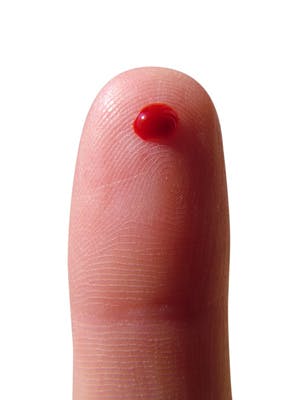Just how exactly do you tell an employee, “I need a blood sample”?
Telling your team you are requiring biometric screenings can be among the most difficult topics you communicate as an employer. There just isn’t a roundabout way of saying it.
Nor should there be. Biometric screenings are sources of invaluable information that can help employees live healthier lives, while potentially saving them money in health care costs.
From just one finger-stick test, an employee can learn their cholesterol level, blood pressure and whether they are at risk for diabetes. Knowing these numbers can help prevent serious illnesses.
Four steps to launch screening
It can also help save them money. More and more companies are linking the results of biometric screenings — and not just participation—to big-dollar incentives, making the stakes even higher for you, the employer and the employee.
So then, how do you tell your employee, “I need a blood sample”? And how do you make the experience a good one for them personally, as well as link it to the company’s overall wellness initiatives?
Here are four essential steps to successfully launch your biometric screening:
1. Use communication/branding to drive participation/understanding
Communicate early. Keep all communications simple. Make sure missives are complete and accurate, accessible to all on an ongoing basis, and consistent with the company culture.
Overcome privacy concerns from the start; stress that all personal data collected will be secure and kept strictly confidential. Providing employees with quality guidance on how to prepare for a screening will ensure the best possible results.
Thoughtfully branded biometric screenings are an opportunity to learn key health numbers and a way to empower people; blood tests as experienced in a hospital or doctor’s office often are not.
2. Make the screening a teachable moment
New finger-stick technology enables accurate analysis and immediate results—and hurts less. More importantly, it provides the opportunity for the “teachable moment.”
Screeners need the training to collect the sample, interpret the results, and explain the findings in a clear, compassionate, immediately actionable way. Immediate feedback — versus delayed, mailed feedback of numeric results—is the most powerful catalyst for positive behavior change — and program compliance.
3. Follow up with advocacy and support
Screeners must also be advocates. In addition to having the knowledge and skill to explain the test results, they need to understand the broader context as well.
They need to be able to discuss next steps, direct employees to additional resources, accurately outline the appeals process, and explain the design of the incentive system to make it physically, emotionally, and financially relevant for employees.
4. Ensure data accuracy and integration
Proven data collection and integration technology is a must for ease of implementation, oversight, speed, and accuracy. Companies increasingly have more than one vendor providing health care-related services; integrating them can be a major headache.
Where health information is involved, HR executives simply cannot afford errors. A bad employee experience can hinder an entire program and create more hassles for overworked HR and benefits staff. Technology proven in large, complex employer deployments is safest. (Tactical note: Where data must be transcribed by hand, always look for a solution that requires double-blind data entry.)
Want to know how to implement your own results-based wellness program? These tips come from our partner, Worksite Wellness. If you want to learn more about them and how to make results-based wellness a success, click here to read about our product, Limeade Greenline.
